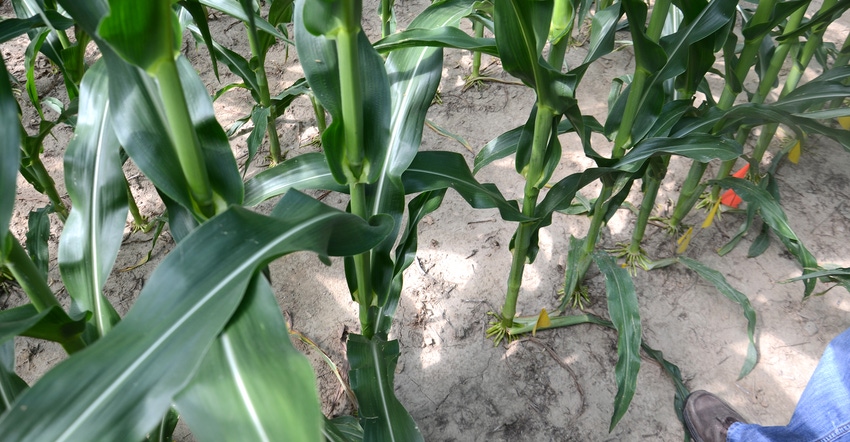
Would you rather have a 12- to 14-inch gap in a corn row with no plant in between, or no gap between plants, but a late-emerging plant growing between two normal plants?
Sound like a trick question? Dave Nanda insists it’s not — it just requires thinking through the situation logically. The first step is to notice such situations in the first place, Nanda says. “You must walk fields,” he emphasizes. “If you’re going to learn about such things as planter performance and the impact of microclimate on corn yields, scout throughout the season.”
Nanda is director of genetics for Seed Genetics Direct. This relatively new seed company, based near Jeffersonville, Ohio, sponsors Corn Watch ’20.
Solve the riddle
If you find a 12- to 14-inch gap within a row, either the planter didn’t drop a seed, or it didn’t germinate. “Germination isn’t 100%,” Nanda says. “By digging in gaps over the past couple of years in the Corn Watch fields, we’ve demonstrated that in most cases, the seed was there and simply didn’t germinate. If you’re scouting early enough in the season, you can still find the seed. If it’s near harvest, it may already have deteriorated.”
Nanda also occasionally finds situations where there isn’t a gap. A seedling emerged, but it obviously emerged several days late. By tasseling time for the field, it may be several growth stages behind. “I contend that at that point, it’s worse than a weed,” Nanda says. “Odds are it won’t produce an ear at all. It will more than likely be a barren stalk. If it produces an ear, it will likely be much smaller than average.”
That’s where his “gap vs. no gap with a late emerger” question arises. “My contention is that if you can’t have a normal plant in that slot, with even spacing 6 to 7 inches apart, you’re better off with no plant in the gap between two other plants,” Nanda insists.
Why? “First, a late-emerging plant pulls nutrients and moisture away from other plants,” Nanda says. “Even if it can’t compete well enough to produce an ear or much of an ear, it competes enough to tie up resources that could go to productive plants.
“Plus, if two plants a foot or more apart don’t sense another close neighbor, each one will compensate for having extra room on one side. They will use available resources to produce more grain than they would have otherwise.”
No, corn plants can’t begin to compensate to the same degree that soybean plants can, Nanda acknowledges. And genetics and ear type may play into how well corn plants can compensate. But most corn plants can adjust and produce more grain given extra space.
“You will wind up with more grain than if a “weed plant” was in the gap,” he concludes.
About the Author(s)
You May Also Like




